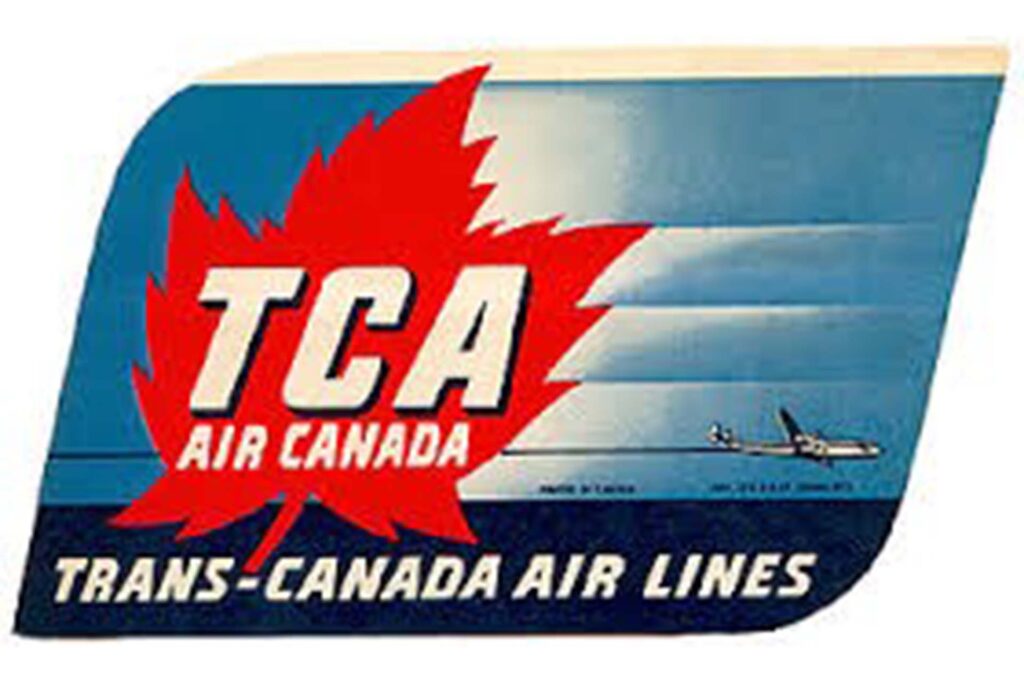There are few companies in Canada that are truly iconic and have played a fundamental role in shaping our country’s history, culture, recreational pastimes, and even basic life choices. There are even fewer that are as well known around the world as they are here, at home. But when the federal government created Trans-Canada Airlines in 1936 and began operating transcontinental flight routes two years later, they knew that this was going to be a game-changer in the way that Canadians lived, worked, and vacationed, uniting the second largest nation on the planet in a way that had not been done since the completion of the first national railway back in 1885. At the Empire Club, which has always been a reflection of the country’s history and even mood, it was therefore not surprising that one of the most significant speeches of 1938 was given its title quite simply by the name of the new company, Trans-Canada Airlines. The speaker was the Vice-President of the new company, Philip G. Johnson, who reminded the audience that flight was no longer just a military occupation, as it had been during the Great War, and in fact that the company’s first and most important mission was the delivery of mail, and that passenger flight would also now become increasingly important. Here is a quote from that memorable speech delivered at this very podium nearly 80 years ago:
“ (…)the task of putting a transcontinental airline across Canada is really a three-party proposition. First of all, the company that is charged with the operation and the organization of the actual flying. Secondly, the Government is represented by the Post Office Department and the Department of Transport. The Post Office furnishes our payload and the Department of Transport the ground facilities necessary to carry on the work. The third partner is the public. No matter how well the first two partners co-operate, or how well we do our job, the company cannot be a success, or the service a success, unless the public uses it, and uses it intelligently. We are not yet ready to act as your servant, because we have followed the procedure of making haste slowly. We desire to leave no stone unturned to build a foundation by which we can take our place as a scheduled air transport service that is as safe and as well operated like any other in the world. By intelligent use of the air service for your mail, for your express and for your passengers–I mean to use it when it serves an economic purpose, not just because of a fad that passes from day to day–I am sure our air service will serve an economic need in Canada and that through such use, Trans-Canada Air Lines, which is your company, will succeed.”
Mr. Johnson was certainly correct in noting that this was far more than a fad, and we all know the milestones of the company which followed…the rebranding to the new name of Air Canada in 1965, the complex privatization that occurred in 1988, the acquisition of Canadian Airlines in 2000, and the subsequent growth-marked by a few financial hick-ups and even one heavily-mediatized bankruptcy in 2003- which followed. Today, Air Canada belongs to that very select club of international carriers that flies to all six inhabited continents and manages to do so with one of the most sterling safety and service records of any airline in the world.
This week, we welcome the man who has been at the helm of this very successful international company for several years, Mr. Calin Rovinescu…last Friday, in fact, he celebrated his seventh year in that position. He originally joined the company back in 2000 after a highly successful career as a Managing Partner at the law firm Stikeman Elliott in Montreal where he practiced law for over 20 years. While he left Air Canada for a few years to co-found and manage Genuity Capital Markets, an independent investment bank, his heart was obviously still flying on the wings of that airline, and when he rejoined them it was as though he had never left. He had already led the restructuring of the Company in 2003-2004, and now he wanted to take the airline to the next level, going far beyond financial stability and growing into what industry associations have named the best international airline in North America, and indeed one of Canada’s best-managed companies. Perhaps this leadership ability comes from the almost endless list of different operational areas he has managed at the airline…legal, information and technology, E-Commerce, human resource, labor, government affairs, communications, marketing, even corporate secretary. If anyone in Canada knows more about the aviation and passenger airline business than our guest today, we at the Empire Club have not yet discovered this person. In fact, our 1938 speaker who addressed us on the future importance of Air Canada’s predecessor company would have called him a renaissance man, an individual who has all of the multiple and complex skill sets in place to be able to invite all Canadians and peoples from around the world to “Come to fly with me”.
The future is bright for Canada’s national carrier, and it continues to be honored as one of the world’s best managed and most customer-friendly airlines. It is important to showcase these iconic companies at the Empire Club that help to make Canada so admired around the world and to better understand why they have achieved the international recognition that they have.


